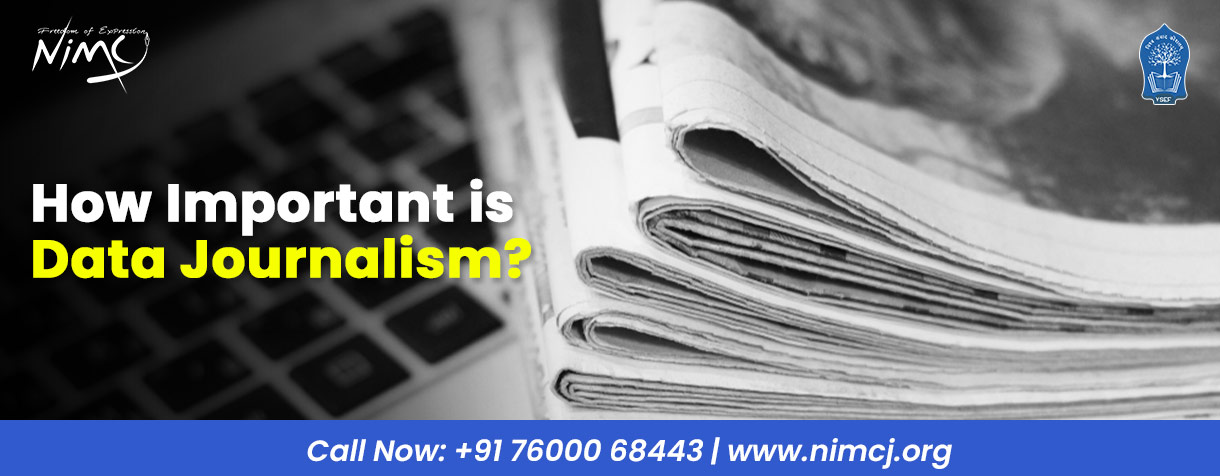
Data journalism is more important than ever, but what exactly is it and why has it risen to the top of newsrooms throughout the world?
Data journalism is a type of journalism in which reporters use enormous datasets to create stories. This reflects the increased relevance of numerical data in information generation and distribution, as well as the expanding link between journalists and professions such as design, computer science, and statistics. Data journalism helps to explain a complicated story by using infographics and data visualizations.
Data is everywhere around us and can be expressed numerically. The terms "data" and "journalism" are both problematic. Some people define "data" as any collection of numbers, most commonly produced on a spreadsheet. Twenty years ago, that was pretty much the only type of data journalists worked with. However, we now live in a digital age when numbers can be employed to communicate almost anything (and almost anything). Data journalism can help a journalist communicate a complicated story by using engaging infographics. Data can be the source of data journalism or the tool used to convey the story or both. It should be treated with mistrust, just like any other source, and we should be conscious of how it may impact and limit the stories made using it, just like any other tool.
Data journalism can bring scientific discoveries to the forefront of a narrative and make them accessible to readers, whether as a static graphic, an interactive feature, or even a little more analysis to provide context to a breaking news piece. The press is being attacked. Media companies and news agencies used to think that they were the only ones that used technology to grow and share what happened overnight. The printing press served as a point of entrance. If someone wanted to reach the population of a city or region the next morning, they would use newspapers. This epoch has come to an end.
Today, news stories are received as they occur from a variety of sources, eyewitnesses, and blogs, and what has occurred is filtered through a large network of social connections, ranked, commented on, and, more often than not, disregarded. For this reason, data journalism is so important. The importance of gathering, filtering, and visualizing information beyond what the eye can see is growing. In today's global economy, there are unseen connections between the orange juice you drink in the morning and the coffee you make. Data is the network's language: small bits of information that, while not usually relevant in a single instance, can be tremendously valuable when seen from the right angle.
For those pursuing a career in journalism, data analytics and being a data journalist present a number of challenges. Here are a few examples.
When crowdsourcing news, access to quality data isn't always as easy to come by. In fact, data journalists identified this as their greatest obstacle. Access to good data was cited by more than half of those polled as the most pressing issue.
After gaining access to the data, many journalists believe they lack the time to thoroughly investigate and visualize it. Working on large data sets as an investigative journalist requires time, which sadly draws individuals away from other aspects of their employment. With today's rolling-news attitude, it's more difficult to devote weeks or months to specific stories. That is one of the reasons why 'time restrictions' were ranked as the second most important concern for data journalists.
Almost half of the journalists stated that a lack of resources was their most pressing concern. This is because newsrooms frequently lack the financial, time, and human resources necessary to follow up on data-related topics.
Approximately 70% of data journalists agree that data adds "reliability and context to a story." Other values of the field, such as the ability to identify both important and unusual topics and deliver them to the public, were also mentioned by these journalists.
They also point out that data journalism allows reporters to be more efficient while verifying claims, tackling more critical subjects, and providing information and distance. The benefits of engaging in this form of reporting are numerous, and it is evident that data journalism is a field that is here to stay. Data analysis has always been an important part of a journalist's job. With so much big data available today, it is now a social science that almost every major newsroom must adopt.
Data-driven journalism is the way of the future. Data literacy is necessary for journalists. It used to be that you could get stories by talking to strangers in bars, and it still is on occasion. However, it will now be necessary to sift through data and empower oneself with the abilities necessary to analyze it and locate interesting pieces. And, keeping everything in context, helping people understand how everything goes together and what's going on in the country.
Pursue data journalism in India from NIMCJ to make your dreams come true.
Read Next Blog: What is Literary Journalism and its Characteristics13 Dec 2022
Post by : NIMCJ